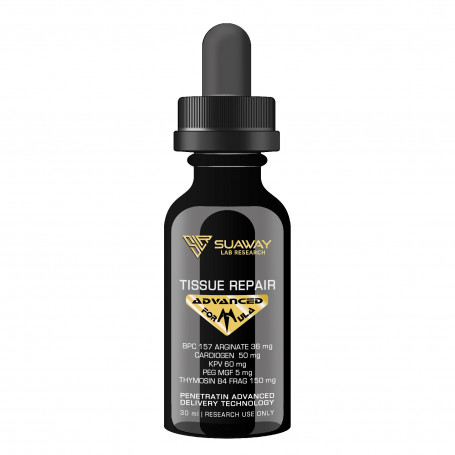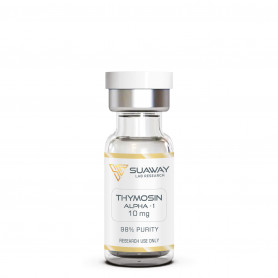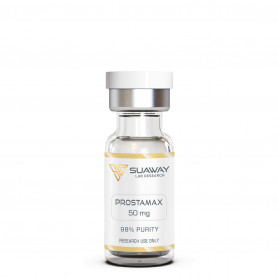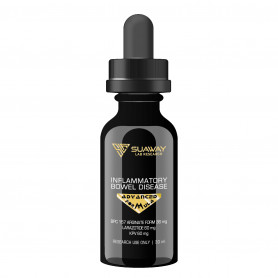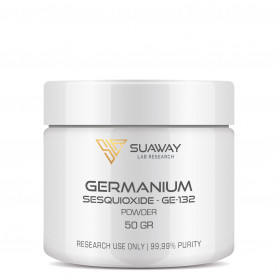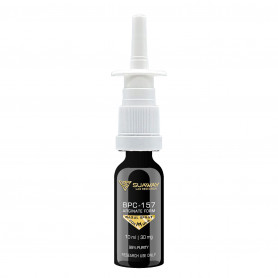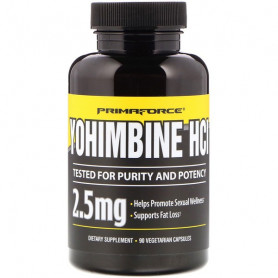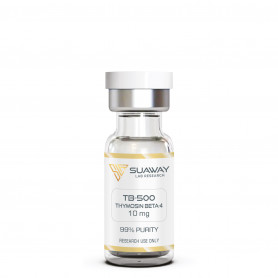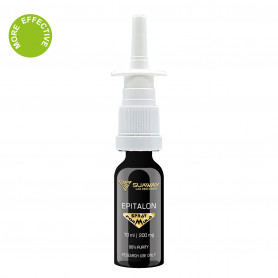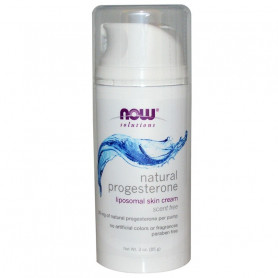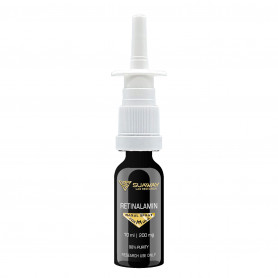TISSUE REPAIR - 30ml
Muscle, Tendon, Ligament and Bone Repair
Cell Growth and Angiogenesis
Anti-Inflammatory and Antioxidant
Wound Healing
Eye Healing
Helps maintain flexibility
Reduced inflammation of tissue in joints
Cystic acne
Acne in general
Eczema Psoriasis
Mold
Lyme
Potential help with multiple sclerosis
inflammatory skin and eye conditions
allergic asthma
arthritis.
FRESHLY PREPARED SOLUTION
Description
PENETRATIN ADVANCED DELIVERY TECHNOLOGY
This product employs advanced delivery technology featuring the cell-penetrating peptide Penetratin. This technology ensures efficient and targeted intracellular delivery of active ingredients, enhancing their effectiveness and bioavailability.
STRUCTURE
BPC-157 ARGINATE FORM - 36mg
Sequence: Gly-Glu-Pro-Pro-Pro-Gly- Lys-Pro-Ala-Asp-Asp-Ala-Gly-Leu-Val x 2 x L-Arg
Molecular Formula: C62H98N16O22
Molecular Weight: 1419.556 g/mol
CAS number: 137525-51-0
Peptide purity: greater than 98%
Other details: No TFA Salt, No Mannitol
CARDIOGEN - 50mg
Sequence: H-Ala-Glu-Asp-Arg-OH
Molecular Formula: C18H31N7O9
Molecular Weight: 489.5 g/mol
PubChem CID: 11583989
Peptide purity: greater than 98%
Other details: No TFA Salt, No Mannitol
KPV - 60mg
Sequence: Lys-Pro-Val
Molecular Formula: C16H30N4O4
Molecular Weight: 342.43 g/mol
CAS: 67727-97-3
Peptide purity: Greater than 98%
Other details: No TFA Salt
PEG-MGF - 5mg
Sequence: PEG-Suc-Tyr-Gln-Pro-Pro-Ser-Thr-Asn-Lys-Asn-Thr-Lys-Ser-Gln-Arg-Arg-Lys-Gly-Ser-Thr-Phe-Glu-Glu-Arg-Lys-Cys
Molecular Formula: C121H200N42O39
Molecular Weight: 2888.16 g/mol
CAS: 108174-48-7
Peptide purity: Greater than 98%
Other details: No TFA Salt, No Mannitol
THYMOSIN B4 FRAGMENT - 150mg
Sequence: Ac-Leu-Lys-Lys-Thr-Glu-Thr-Gln
Molecular Formula: C38H68N10O14
Molecular Weight: 889.018 g/mol
CAS number: 885340-08-9
Peptide purity: greater than 98.0%
Other details: No TFA Salt, No Mannitol
DESCRIPTION
BPC-157 Arginate Salt , Thymosin Beta 4 Fragment and KPV have undergone extensive research for their ability to promote wound healing and increase rates of tissue repair. These forms can significantly improve the health of the nervous system by reducing inflammation and oxidative stress, protect cells that support neurons and improve the migration of cells that partake in tissue repair. Much research is also being done with these three peptides in the setting of traumatic brain injury, stroke, and neurodegenerative diseases like ALS and Alzheimer's.
The short peptide known as Cardiogen has been shown to possess bioregulator-like qualities. According to research, the major impacts that it has are on fibroblasts, which are the cells that are essential for tissue healing and scar formation all across the body.
According to research, PEG-MGF may speed up bone regeneration by encouraging osteoblasts, the cells that mineralize bone, to multiply.
BPC-157 ARGINATE FORM
BPC-157 arginate form is very stable in human gastric juice and boosts the oral bioavailability from less than 3% to greater than 90%. BPC 157 arginate salt is also more stable in varied temperature environments and can resist the effects of UV light. Studies show that just 5% of BPC 157 arginate is degraded after 5 hours in gastric acid as compared to 98% of the acetate salt with oral administration. The enhanced oral bioavailability of the arginate salt makes it the preferred choice in BPC 157 oral research.
Muscle, Tendon, Ligament and Bone Repair
By inducing angiogenic growth factor healing, BPC-157 has a broad range of healing properties. By increasing the activity of endothelial cell activity that line blood vessels, BPC-157 can aid in the repair of muscles, tendons, ligaments and bone.
Cell Growth and Angiogenesis
Research has shown that BPC-157 increases blood vessel growth in all areas of the body. A study of chicken embryos demonstrated that BPC-157 increases vascular growth through the activation of cell surface receptors in the Nitrous Oxide pathway, growing new vessels toward the injury. This implies potential treatment of heart disease, overall cellular repair for life extension, and other general healing.
Anti-Inflammatory and Antioxidant
A study demonstrated that BPC-157 is a powerful antioxidant by reducing free radical formation via the Nitric Oxide system, attenuating duodenal lesions in rats by significantly decreasing oxidative stress.
Wound Healing
In a study with chemical burns, BPC-157 was shown to rapidly accelerate skin healing, inducing granulation tissue formation, reepithelialization, dermal remodeling, and collagen deposition.
CARDIOGEN
The short peptide known as Cardiogen is recognised to possess features that make it a bioregulator. According to research, the principal impacts that it has are on the cells known as fibroblasts, which are responsible for tissue healing and the creation of scars throughout the body. Research indicates that Cardiogen's capacity to change fibroblast activity may have potential advantages in a range of tissues, despite the fact that much of the attention paid to Cardiogen has been focused on its function in a number of cardiovascular disorders. In addition, Cardiogen seems to be a synergistic peptide, which means that it increases the value of some common treatments and, as a result, improves long-term results while simultaneously lowering the number of adverse effects. Last but not least, some early study conducted in rat models indicates that Cardiogen may improve the rates of apoptosis in tumour cells.
In the heart, Cardiogen seems to boost the proliferation of cardiomyocytes while at the same time inhibiting the growth and development of fibroblasts. Because of this, there is a reduction in the creation of scar tissue and an improvement in the long-term consequences of cardiac remodelling, which may lead to heart failure. In addition, it seems that taking 20 milligrammes of Cardiogen may bring about a reduction in the amount of p53 protein that is expressed, which in turn brings about a reduction in the amount of apoptosis that occurs.
KPV
KPV is a peptide that is naturally produced in the body. It is found in the hormone alpha-MSH. It is used for inflammation, gut health and conditions such as Inflammatory Bowel Disease
Anti-Inflammatory
KPV exerts its anti-inflammatory function inside cells, where it inactivates inflammatory pathways. KPV enters the cell and interacts directly with inflammatory signalling molecules inside the cell. It enters the nucleus of the cell and, once there, can inhibit the interaction of inflammatory substances and molecules.
Anti-Microbial
In addition to its anti‐inflammatory effect, KPV also has antimicrobial effects against pathogens. Its antimicrobial effects were demonstrated on two major pathogens called staphylococcus aureus and Candida albicans. In one study, KPV significantly inhibited staphylococcus aureus from forming colonies.
Wound Healing
Research in wound healing shows KPV can speed wound healing, reduce infection, fight inflammation, and lead to better cosmetic results. Often with wounds, various microbes enter the wound. KPV, with its anti-inflammatory and anti-microbial properties, can be very helpful for combatting these microbes and healing wounds.
It also helps with:
- Cystic acne
- Acne in general
- Eczema
- Psoriasis
- Mold
- Lyme
- Potential help with multiple sclerosis
- inflammatory skin and eye conditions
- allergic asthma
- arthritis.
PEF-MGF
PEG-MGF, a splice variant of the IGF gene, is used to promote the growth and development of tissue, particularly muscle. It enables the muscle fiber to fuse and mature by increasing the number of stem cells in the body. This procedure is essential for mature muscular development. The difference between IGF-1 and MGF is that the latter promotes myoblast division by activating several receptors.
There is some evidence to support the idea that PEG-MGF enhances immune activity associated to wound healing, which could speed up the healing process.
Another study demonstrates that MGF controls muscle inflammation and enhances the migration of neutrophils and macrophages to the site of damage.
International endocrinology experts' studies have shown that MGF activates the insulin-like growth factor 1 receptor like that of IGF-1. In humans, stimulation of this receptor has been associated with reduced aging, elevated lean body mass, and enhanced energy balance. According to this function, PEG-MGF may have effects like those of IGF-1, resulting in better muscle regeneration, increased fat metabolism, or overall improvements in lean body mass.
PEG-MGF initially was appreciated as exerting post-mitotic reparative effects in skeletal muscle, but more recently reports have demonstrated that PEG-MGF acts as a local tissue repair factor in acute injury models of muscle, cardiac muscle and neurons.
THYMOSIN B4 FRAGMENT
Thymosin beta 4 containing 43 amino-acid residues belongs to a family of highly homologous peptides present at high concentrations in various species, cells, and tissues. . Like many naturally occurring proteins, Thymosin Beta 4 is a very long peptide sequence therefore has to be administered Sub-Q only. It is not orally or intranasally bioavailable. Researchers found that a region that contains just 7 amino acids (LKKTETQ), retains most of the larger protein’s effects when it comes to cell migration, actin polymerization, and wound healing. This fragmented section is referred to as Thymosin beta 4 Fragment.
Because Thymosin beta 4 Fragment is substantially smaller than its parent molecule, its more readily absorbed by the gastrointestinal tract and then by cells. This enhanced oral bioavailability makes Thymosin beta 4 Fragment simpler to administer than the 43 amino acid Thymosin Beta 4.
After injury, Thymosin beta 4, is released by platelets, macrophages and many other cell types to protect cells and tissues from further damage and reduce apoptosis, inflammation and microbial growth. Thymosin beta 4 binds to actin and promotes cell migration, including the mobilization, migration, and differentiation of stem/progenitor cells, which form new blood vessels and regenerate the tissue. Thymosin beta 4 also decreases the number of myofibroblasts in wounds, resulting in decreased scar formation and fibrosis. Thymosin beta 4 also has anti-inflammatory properties and works to decrease the amount of inflammatory substances, called cytokines. Inflammation plays a large role in many of the symptoms associated with a number of other conditions (i.e., Lyme disease, CFS, FM, autoimmune diseases, infections, etc.), making the potential impact of Thymosin beta 4 quite extensive.
Significantly helps in the healing and repair of muscle, tendon, ligament, joint and bone injuries
Strong anti-inflammatory properties, decreases the amount of inflammatory substances, called cytokines
Increases angiogenesis (new blood vessel formation) around damaged tissue Improves collagen deposition, tissue healing and cell survival
Increases exchange of substances between cells
Upregulates actin (a vital cellular protein critical to muscle contraction, cell mobility, and signaling between cells)
Supports increase in resistance and strength of muscles, calms muscle spasm and improves muscle tone
Prevents the formation of adhesions and fibrous bands in muscles, tendons, and ligaments
Stretches connective tissue and helps maintain its flexibility
Has cardio and neuroprotective effects
REFERENCES
D. Pevec et al., "Impact of pentadecapeptide BPC 157 on muscle healing impaired by systemic corticosteroid application" [PubMed]
Chung-Hsun Chang et al., "The promoting effect of pentadecapeptide BPC 157 on tendon healing involves tendon outgrowth, cell survival, and cell migration" [Journal of Applied Physiology]
B. Sebecic et al., "Osteogenic effect of a gastric pentadecapeptide, BPC-157, on the healing of segmental bone defect in rabbits: a comparison with bone marrow and autologous cortical bone implantation" [ScienceDirect]
L. Brcic et al., "Modulatory effect of gastric pentadecapeptide BPC 157 on angiogenesis in muscle and tendon healing" [PubMed]
P. Sikiric et al., "Pentadecapeptide BPC 157 positively affects both non-steroidal anti-inflammatory agent-induced gastrointestinal lesions and adjuvant arthritis in rats" [ScienceDirect]
S. Seiwerth et al., "BPC 157's effect on healing" [PubMed]
A.L. Goldstein et al., "Thymosin β4: a multi-functional regenerative peptide. Basic properties and clinical applications" [PubMed]
H. Sadek et al., "Cardiogenic small molecules that enhance myocardial repair by stem cells" [PMC]
G. Goldspink "MGF: a local growth factor or a local tissue repair factor?" [Physiology News Magazine]
B. Zhang et al., "Mechano-growth factor E peptide promotes healing of rat injured tendon" [PubMed]
B. Zablocka et al., "Mechano-Growth Factor: an important cog or a loose screw in the repair machinery?" [NIH]
Y. Sha et al., "MGF E peptide pretreatment improves collagen synthesis and cell proliferation of injured human ACL fibroblasts via MEK-ERK1/2 signaling pathway" [PubMed]
H. Hu et al., "Endogenous Repair and Regeneration of Injured Articular Cartilage: A Challenging but Promising Therapeutic Strategy" [PubMed]
H.P. Ehrlich et al., "Thymosin beta4 enhances repair by organizing connective tissue and preventing the appearance of myofibroblasts" [PubMed]
G. Bioklund et al., "Thymosin β4: A Multi-Faceted Tissue Repair Stimulating Protein in Heart Injury" [PubMed]
H.K. Kleinman et al., "Thymosin β4 Promotes Dermal Healing" [PubMed]
W.S. Yang et al., "Thymosin β4: potential to treat epidermolysis bullosa and other severe dermal injuries" [PubMed]
A.L. Goldstein et al., "Advances in the basic and clinical applications of thymosin β4" [PubMed]
D. Philip et al., "Animal studies with thymosin beta, a multifunctional tissue repair and regeneration peptide" [PubMed]
B.J. Jeon et al., "Thymosin beta-4 promotes mesenchymal stem cell proliferation via an interleukin-8-dependent mechanism" [PubMed]
DISCLAIMER
This product is intendend for lab research and development use only. These studies are performed outside of the body. This product is not medicines or drugs and has not been approved by the FDA or EMA to prevent, treat or cure any medical condition, ailment or disease. Bodily introduction of any kind into humans or animals is strictly forbidden by law. This product should only be handled by licensed, qualified professionals.
All product information provided on this website is for informational and educational purposes only.

